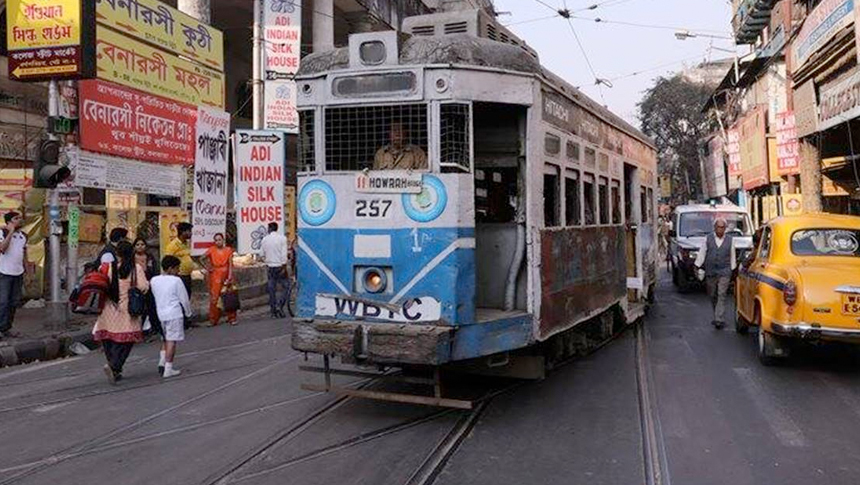Yesterday, Ramki from Cartwheel tagged me to a news item that said that tram routes in Kolkata were being reduced. “Tagging some friends who are emotionally invested in Cal. Not sure I understand all the issues, but tram rides in Cal are a childhood memory I can’t forget,” Ramki had said while retweeting a tweet by the Calcutta Tram Users Association that said, “The removal of tramlines from bridges would reduce the tram route count even further thus decimating the tramways of the city for all practical purposes.”
And that tweet sent me down memory lane and took me on a journey that made me realise how much of an impact the tram had on me.

My school (St. Xavier’s Collegiate School) and my (first) house were located such that no tram route made sense as a mode of commuting to and fro. The second house was walking distance from school, so the question of the commute didn’t arise.
So I hadn’t used a tram at all, till I was in class VI and joined the school NCC Navy ‘course’. The weekly parades were held at the maidan (THE maidan, not any maidan), and all through the two-hour parade on Sunday morning, we could see trams plying in the distance, making their way from Esplanade to Kidderpur or vice versa. One Sunday, on a lark, after the parade, a group of us decided to go on a tram ride.
And we were hooked. We took the first tram going towards Kidderpur, an area completely off the beaten track for our little group. We wanted to get value for money, so we bought tickets to the terminus, looking agape at everything on the way, astonished at how different ‘this Kolkata’ was from ‘our Kolkata’. We reached the destination and walked, exploring markets, roadside eateries and the ‘smugglers’ shops, fascinated by the new world. The puchkas in Kidderpur tasted different from those in Lansdowne Road; the jhal muri was a world apart from the Park Street version; some of the Bengali sweets sold in this area were sweets we never saw in ‘south’ Kolkata. The sounds we heard were different, the people were different, the language was different.
Each Sunday, we decided to go in another direction and make new discoveries. On one of the earlier Sundays, we figured out that we could buy an ‘all-day pass’ that allowed us to make UNLIMITED trips on the day in question, and that opened up another world for us. More money in our pockets to experiment with roadside food and drink.
Over a short period of time, tram travel became a habit. It allowed us to discover our city cheap, transported on a leisurely, gentle trip that crisscrossed the city.
Without the tram, there were areas in Kolkata I would never have known, foods that I would never have sampled and learned to love, words I would never have heard, music that I would never have been exposed to, colours and clothes I would never have seen. There is no doubt in my mind that my confidence in speaking – and reading – Bengali increased manifold because I was forced to read and speak Bengali on these wonderful tram rides.
My love with the tram extended to my love for the railway journeys. The principles of learning remain the same; new places, new food, new languages, new music, new colours, new clothes.
And you get all of this for a pittance.
Why am I posting this in ReadytoMelt and not on my Facebook wall?
It’s because, ages later, I realised that trams, trains and buses were gifts to anyone in advertising. It is the ultimate in research in understanding new lands and people and habits; if a story has to be told of all of Kolkata, the tram rides instantly recalled, became a fountain of ‘insights’’ if a story has to be told of all of India, the train journeys played a similar role.
It would help you in getting the script right, the insight right, the casting right, the locations and the sets right, and so on.
And you thought that the role of a tram was to get you from Point A to Point B?